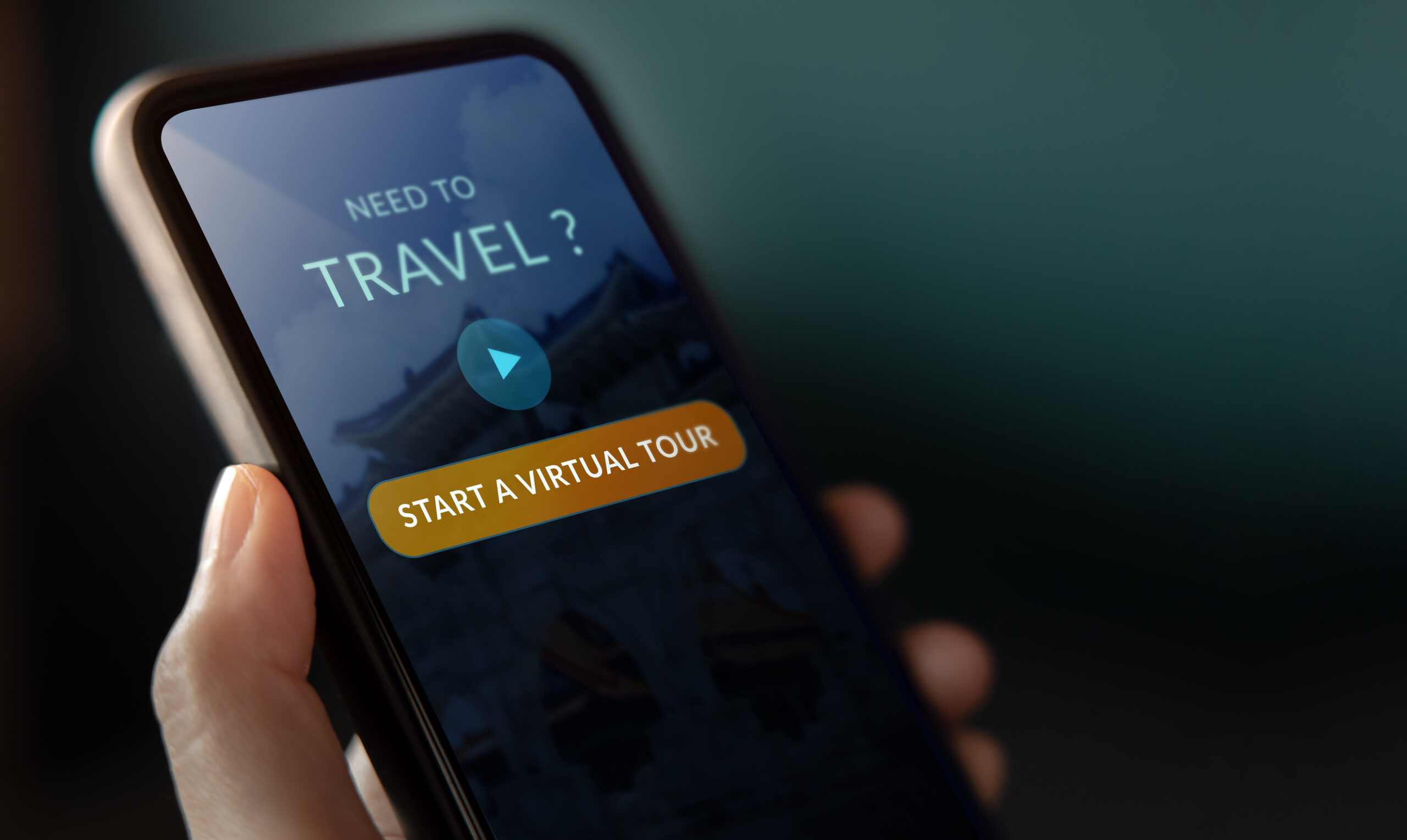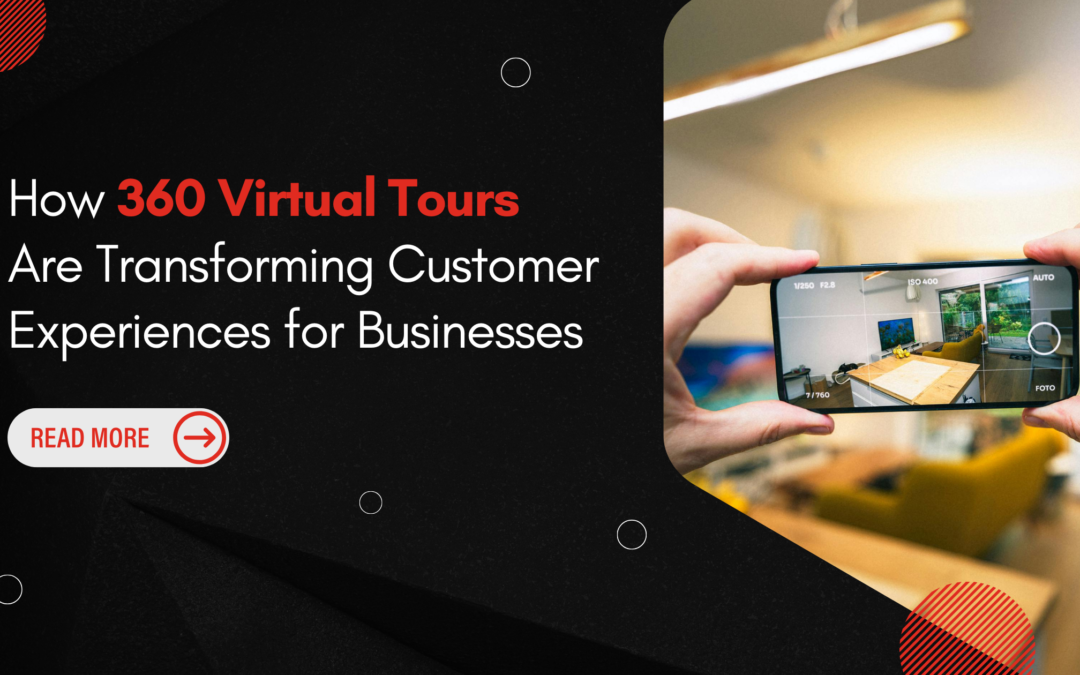- 360 virtual tours offer an interactive and immersive way for customers to experience your business.
- These virtual tours positively impact customer behavior by fostering emotional connections, driving faster decision-making, and increasing confidence in your brand.
- Integrating 360 virtual tours into your local SEO strategy can improve search rankings, attract local customers, and enhance engagement across platforms like Google Business Profile and social media.
Scrolling through photos doesn’t always cut it. Customers want to feel like they’re part of the action, whether it’s walking through a cozy café, checking out a gym layout, or previewing a dream home. That’s where 360 virtual tours shine—offering an immersive, interactive experience that’s as close as it gets to the real thing.
Let’s look into why it’s quickly becoming a favorite marketing tool across industries.
What Are 360 Virtual Tours and How Do They Work?
360 virtual tours are interactive digital tools that let users explore a location with a complete panoramic view, simulating the experience of being physically present. This immersive experience is created using specialized cameras and software to capture and stitch together images or videos into a seamless 360-degree perspective.
How They Work
- Capturing Images: Advanced cameras, such as DSLR setups or 360-degree cameras, capture high-resolution images from multiple angles.
- Stitching and Processing: These images are combined using editing software to create a smooth, panoramic view.
- Interactive Features: Users can click on hotspots, labels, and multimedia elements to explore details.
- Publishing: The tour is then uploaded to platforms such as websites, Google Business Profiles, or social media, making it accessible to users across devices.
The process may sound technical, but its outcome is a user-friendly experience that replicates being on-site. Customers can “walk” through a property, zoom in on details, or explore specific sections of interest—all from their devices.
The Benefits of 360 Virtual Tours for Your Business
A 360 virtual tour offers businesses a dynamic way to engage with their customers.
Here’s why it’s worth the investment:
Captures Attention and Keeps Customers Engaged
Interactive experiences like virtual tours grab attention instantly. Instead of passively scrolling through images or reading descriptions, customers actively explore the space. This level of engagement leads to higher retention rates as customers spend more time interacting with your content.
Builds Trust Through Transparency
One of the biggest barriers to online decision-making is uncertainty. Customers want to know what they are paying for before committing. A virtual tour offers a realistic view of your space, making it easier for customers to trust your business.
Whether it’s a restaurant showcasing its ambiance or a gym highlighting its equipment, the transparency of virtual tours builds credibility.
Reduces Unnecessary Back-and-Forth
For businesses like real estate agencies or event venues, 360 virtual tours eliminate the need for preliminary in-person visits. Prospective clients can filter out unsuitable options on their own, allowing you to focus on qualified leads who are genuinely interested.
Boosts Conversion Rates
When customers can visualize themselves in your space, they are more likely to take action. 360 virtual tours bridge the gap between curiosity and decision-making, encouraging potential clients to make reservations, book appointments, or make purchases.
Improves Marketing Efforts Across Platforms
Virtual tours are versatile. They can be embedded on your website, shared on social media, and even linked in email marketing campaigns. Their visual appeal increases engagement across platforms, ensuring a consistent and impactful marketing strategy.
Industries That Benefit the Most
While any business can leverage the power of 360 virtual tours, some sectors see particularly significant advantages.
Real Estate
First impressions matter in real estate. 360 virtual tours allow potential buyers or renters to explore properties online, saving time and effort. They can view layouts, check room dimensions, and even envision how their furniture would fit—all without stepping foot on-site.
Hospitality and Travel

360 virtual tours are invaluable for hotels, resorts, and travel agencies. They showcase rooms, amenities, and local attractions, helping travelers feel confident in their bookings. For destination weddings or event venues, virtual tours can highlight décor options, lighting, and seating arrangements.
Retail Stores
Retailers, especially those with large or uniquely designed spaces, can use virtual tours to give customers an idea of the shopping experience. Boutiques can highlight exclusive collections, while larger stores can guide customers through different departments.
Education and Training Centers
Schools, colleges, and training institutes can use virtual tours to attract students and parents. Showcasing classrooms, libraries, and recreational spaces helps prospective students imagine life on campus.
Healthcare Facilities
Hospitals, clinics, and wellness centers can use 360 virtual tours to provide patients and their families with a sense of familiarity. Exploring the facility beforehand helps patients feel more at ease about their visit.
Restaurants and Cafés
In the hospitality industry, ambiance plays a significant role in attracting customers. Virtual tours let patrons see dining areas, private event spaces, or outdoor patios, encouraging them to visit in person.
How 360 Virtual Tours Impact Customer Behavior
Virtual tours influence how customers perceive and interact with businesses.
Here are some ways they shape customer behavior:
Fosters Emotional Connections
A 360 virtual tour creates an emotional connection by offering an experience that feels personal. Customers who explore your space online often feel a sense of familiarity and trust, which makes them more likely to visit in person or make a purchase.
Drives Faster Decision-Making
When customers can see every detail of your business—be it the layout, cleanliness, or amenities—they can make informed decisions quickly. For example, a couple planning a wedding might choose a venue immediately after a positive virtual tour experience.
Increases Customer Confidence
360 virtual tours eliminate guesswork. Customers are less likely to encounter unpleasant surprises, which builds confidence in your brand and fosters loyalty.
Encourages Repeat Interactions
Because virtual tours are interactive, customers are more likely to revisit them. With each visit, their connection to your business grows, increasing the likelihood of conversion into paying customers.
Caters to Modern Shopping Habits
Today’s consumers value convenience and efficiency. Virtual tours allow them to gather detailed information at their own pace, aligning perfectly with their expectations.
How 360 Virtual Tours Boost Local SEO Efforts
Integrating 360 virtual tours into your local SEO strategy can give your business a competitive edge by improving online visibility and attracting more local customers.
Increases Google Business Profile Engagement
When you add a 360 virtual tour to your Google Business Profile, it immediately makes your listing more appealing. Customers are more likely to click on a profile with an interactive tour, increasing your chances of gaining new leads.
Improves Search Rankings
Google values user engagement metrics like click-through rates and dwell time. A virtual tour keeps visitors on your page longer, signaling to search engines that your content is relevant and valuable. Over time, this can improve your search engine rankings.
Encourages Social Sharing
Virtual tours are inherently shareable, making them perfect for social media platforms. When customers share your tour, it drives referral traffic to your website and boosts your local SEO efforts.
Attracts Local Customers
Local customers searching for businesses in your area are more likely to choose one that offers a virtual tour. Whether they’re looking for a café, gym, or doctor’s office, a virtual tour gives them the confidence to choose your business over competitors.
Tips for Maximizing the Impact of Your 360 Virtual Tour
1. Focus on High-Quality Visuals
Invest in professional photography and editing to ensure your virtual tour looks polished. High-resolution visuals enhance the customer experience and make your business appear more professional.
2. Add Interactive Hotspots
Hotspots allow users to click on specific areas to learn more. You can use them to highlight key features, provide descriptions, or even link to related products and services.
3. Optimize for Mobile Users
Many customers will view your virtual tour on their smartphones. Make sure the tour is mobile-friendly and loads quickly across all devices.
4. Incorporate Calls to Action
Guide users toward the next step by including calls to action within the tour. For example, a “Book Now” button in a hotel’s virtual tour can lead directly to the booking page.
5. Keep It Updated
As your space evolves, make sure your virtual tour reflects those changes. An outdated tour can mislead customers and damage trust.
6. Include Virtual Reality (VR) Compatibility
If possible, make your 360 virtual tour compatible with VR headsets. This immersive experience can captivate tech-savvy users and create a memorable impression, especially for industries like real estate, travel, and entertainment.
7. Use Strategic Lighting and Staging
Lighting can make or break your visuals. Ensure the space is well-lit to capture details and avoid shadows. For staged environments, such as homes or event venues, curate the setup to match what your customers want to experience.
8. Add Audio Narration or Background Music
You can also include an audio guide or soothing background music to your virtual tour. Narration can guide users through the tour, while music can set the right mood.
9. Create Multiple Versions for Different Audiences
If you cater to diverse customer segments, create customized virtual tours highlighting specific areas or features. For example, a hotel might create one tour showcasing family-friendly amenities and another focused on luxury suites.
10. Pair It with a Detailed FAQ Section
Anticipate customer questions about your virtual tour or business and provide answers alongside it. This proactive approach builds trust and encourages users to take action.
Combining 360 Virtual Tours with Other Marketing Strategies
A 360 virtual tour works best when integrated into a broader marketing strategy.
Here’s how you can combine it with other efforts:
- Social Media Marketing: Share snippets or highlights of your tour to attract followers and drive traffic to your website.
- Email Campaigns: Use virtual tours as part of your email marketing strategy to engage subscribers and encourage click-throughs.
- PPC Campaigns: Incorporate your virtual tour into paid advertising campaigns to boost click-through rates and conversions.
- Content Marketing: Create blog posts or videos around your tour, such as a behind-the-scenes look at its creation or tips for navigating the space.
Why Partner with Free Press Marketing?
Creating and promoting a 360 virtual tour requires expertise, and that’s where we come in. At Free Press Marketing, we specialize in crafting interactive tours that help businesses grow.
Our approach includes:
- Creating high-quality, engaging tours tailored to your needs.
- Integrating the tour seamlessly into your digital presence.
- Ensuring compatibility with Google Business Profiles and other platforms.
Ready to transform how customers experience your business? Let our team at Free Press Marketing help you create a compelling 360 virtual tour that sets you apart. Contact us today to get started!
Unlock Your Business Potential
Take the first step towards a stronger online presence by requesting your comprehensive Digital Audit today. Discover how your business measures up across key digital channels and learn actionable strategies to enhance your visibility and engagement.


